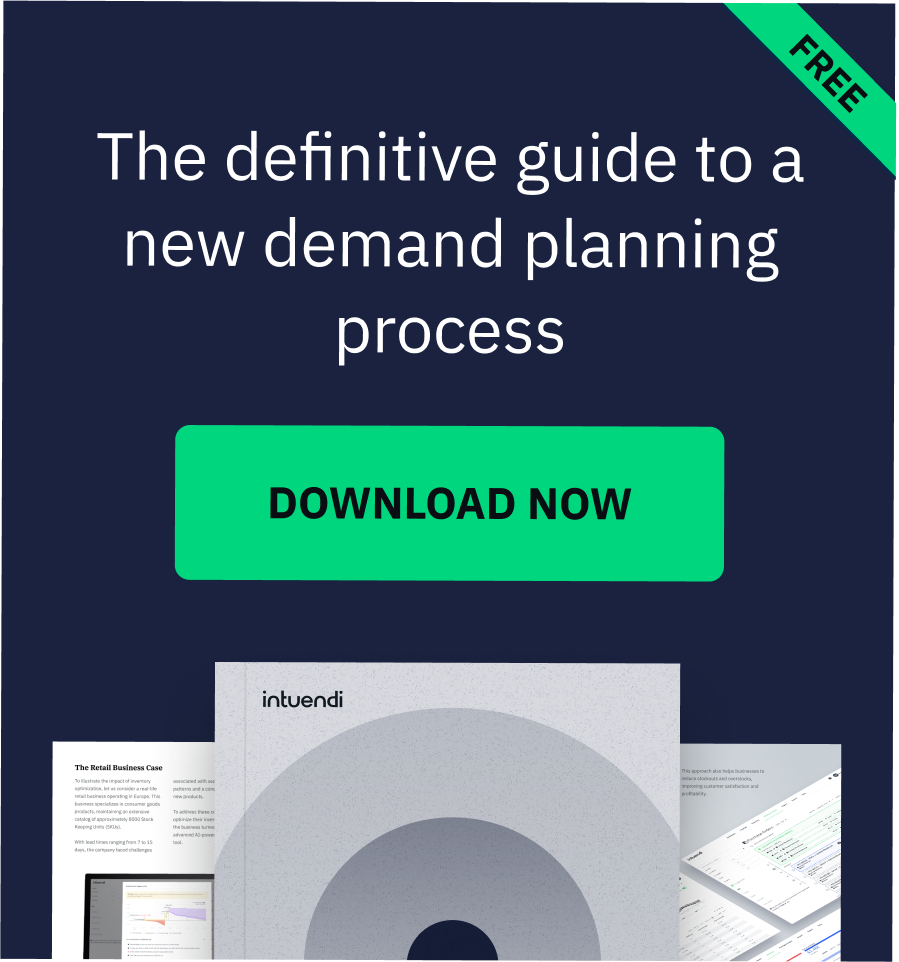Choosing the right demand planning software is a critical decision for any business looking to optimize its supply chain, reduce costs, and improve customer satisfaction. That being said, with a plethora of options available in the market, selecting the ideal solution can feel overwhelming. Businesses often struggle to navigate the complexities of different software features, vendor promises, and pricing models.
This article is here to serve as your comprehensive guide to effectively evaluate demand planning software, ensuring you make an informed decision that aligns with your business objectives and sets you up for future success.
Key Benefits of Utilizing Demand Planning Software
Implementing dedicated demand planning software offers a multitude of advantages that can significantly impact your business operations. One of the most significant benefits is improved forecasting accuracy. Sophisticated algorithms and statistical models within these software solutions analyze historical data, market trends, and various external factors to generate more precise demand forecasts compared to manual methods or simple spreadsheets. This enhanced accuracy directly translates to better inventory management and resource allocation.
Demand planning software also brings automation to traditionally manual processes. Tasks like data collection, forecast generation, and report creation are streamlined, freeing up valuable time for your team to focus on strategic planning and analysis rather than tedious data manipulation. This automation not only increases efficiency but also reduces the potential for human error.
Another key advantage to implementing demand planning software is enhanced collaboration. Demand planning software often provides a centralized platform where different departments, such as sales, marketing, and operations, can collaborate on forecasts and share critical information. This unified approach supports better communication and alignment across the organization, leading to more cohesive and effective planning.
Ultimately, demand planning software empowers data-driven decision-making. By providing clear insights into demand patterns, inventory levels, and potential risks, these tools enable businesses to make informed decisions regarding production planning, inventory optimization, and resource allocation. This data-driven approach is essential for maintaining a competitive edge in today’s market.
Essential Features and Capabilities to Evaluate
Moving beyond the general benefits, it’s also important to dive into the specific features and capabilities that differentiate demand planning software solutions. When comparing different options, businesses should assess several key areas to ensure the software meets their unique requirements.
Forecasting and Predictive Analytics
Robust forecasting capabilities are at the heart of any effective demand planning software. It’s important to understand the different forecasting methods and algorithms the software employs. Look for solutions that offer a range of techniques, such as time series analysis, regression modeling, and machine learning algorithms, to accommodate varying data patterns and business complexities. The software should be able to handle factors like historical sales data, seasonality, promotional impacts, and market trends to generate accurate forecasts. Accuracy is paramount, so inquire about the software’s forecasting accuracy metrics and how they are measured.
Inventory Optimization and Management
Demand planning software plays a vital role in optimizing inventory levels and minimizing associated costs. Key features to evaluate include the software’s ability to calculate safety stock levels based on demand variability and lead times. The system should provide recommendations for optimal inventory levels across different products and locations, helping to prevent both stockouts and excess inventory. Explore if the software offers strategies to minimize holding costs, improve inventory turnover, and optimize the entire inventory management process.
Data Integration and Compatibility
When evaluating demand planning software, seamless integration with your existing business systems is non-negotiable. Demand planning software needs to communicate effectively with your Enterprise Resource Planning (ERP), Customer Relationship Management (CRM), and Supply Chain Management (SCM) systems to ensure success. Consider the software’s data import and export capabilities. Does it offer robust APIs (Application Programming Interfaces) for smooth data exchange? Assess its ability to consolidate data from various sources, including sales data, marketing data, and external market intelligence, to provide a holistic view of demand.
Collaboration and Workflow Automation
With so many moving pieces, effective demand planning is a collaborative effort. The software should facilitate teamwork and streamline workflows. Look for functionalities that support collaboration, such as shared forecast views, communication tools within the platform, and the ability to assign tasks and track progress. Workflow automation features, like automated alerts for forecast deviations or inventory thresholds, and approval processes for forecast adjustments, can significantly improve efficiency and responsiveness.
Customization and Scalability
Your business is unique, and your demand planning software should be adaptable to your specific needs. Evaluate the customization options offered by the software. Can you customize reports and dashboards to track the KPIs that are most important to your business? Is the workflow configurable to align with your internal processes? Scalability is also another crucial factor to consider. The software should be able to handle increasing data volumes, expanding product lines, and growing user loads as your business grows. You want to ensure that your chosen software can scale with you in the long run.
Key Evaluation Criteria Beyond Features
While features are essential, a comprehensive evaluation extends beyond just functionalities. Several other critical criteria related to software performance, vendor aspects, and cost considerations should also be carefully considered.
Usability and User Experience
An intuitive and user-friendly interface is vital for user adoption and effective utilization of the software. Consider the ease of navigation within the system. Are the dashboards clear and informative? Can users easily generate reports and access the data they need? Look for customizable views that allow users to personalize their experience. A positive user experience should not be overlooked, as it helps ensure your team embraces the software and maximizes its potential.
Software Performance and Reliability
Software performance and reliability are paramount for consistent and accurate demand planning. Whenever possible throughout your search, request pilot tests or free trials to experience the software firsthand. Analyze case studies and user reviews to understand the software’s performance in real-world scenarios. Compare performance metrics and KPIs, such as forecast accuracy rates and system uptime, to ensure the software is reliable and effective in meeting your demand planning needs.
Vendor Reliability, Support, and Security
Choosing a reliable vendor is just as important as choosing the right software. Research the vendor’s reputation and experience in the demand planning software market. Evaluate the quality of their customer support and the availability of training resources. Inquire about their security measures and compliance certifications to ensure your data is protected. A strong vendor partnership plays a role in your long-term success.
Cost Considerations and ROI Analysis
Finally, carefully consider the financial aspects of your software investment. Understand the different pricing models offered, such as subscription-based versus one-time purchase licenses. Calculate the total cost of ownership, taking into account implementation costs, training fees, and ongoing maintenance expenses. Pay special attention to any hidden costs so that you aren’t surprised when they pop up. Conduct a thorough ROI (Return on Investment) analysis to justify the investment and ensure the software will deliver tangible benefits that outweigh its cost.
Step-by-Step Guide to Evaluating Demand Planning Software
To keep your evaluation process organized and efficient, follow these step-by-step guidelines:
Step 1: Define Your Business Needs and Requirements
Begin by clearly defining your specific business requirements, pain points, and goals that you expect the demand planning software to address. What are your current challenges with forecasting, inventory management, or supply chain efficiency? What specific improvements are you hoping to achieve? Documenting these needs will provide a clear roadmap for your software evaluation.
Step 2: Create a Shortlist of Potential Vendors
Based on your defined needs, research and create a shortlist of vendors that offer demand planning software solutions that seem to align with your requirements. Utilize online resources, industry publications, and peer recommendations to identify potential vendors. Focus on vendors with experience in your industry and a proven track record.
Step 3: Request Software Demos and Free Trials
Software demos and free trials provide a sneak peek into what your experience would actually look like should you choose to work with a certain demand planning software. This hands-on experience is invaluable to the decision making process. Request software demos from your shortlisted vendors to see the software in action and understand its functionalities. Whenever possible, take advantage of free trials to test the software within your own business environment using your own data. This firsthand experience will provide valuable insights into usability and performance.
Step 4: Evaluate Vendor Support and Training
During the demo and trial phase, actively evaluate the vendor’s support quality and the availability of training resources. Are they responsive to your questions? Do they offer comprehensive documentation and training materials? Assess their onboarding process and ongoing support structure to ensure you will have the necessary assistance for successful implementation and long-term use.
Step 5: Make an Informed Final Decision
After gathering information, conducting trials, and evaluating vendors, it’s time to make an informed final decision. Compare the data you’ve collected, considering all evaluation criteria – features, performance, vendor aspects, and cost. Choose the demand planning software that best fits your business needs, budget, and long-term strategic goals.
Choosing the Right Demand Planning Software for Your Business
Selecting the right demand planning software for your business is a significant investment that can yield substantial returns. By following a structured evaluation process, focusing on essential features, considering vendor reliability, and carefully analyzing costs, you can rest assured that you will make an informed decision. Remember, the goal is to choose a solution that not only meets your current needs but also scales with you and empowers you to optimize your supply chain for years to come. Take your time, conduct thorough research, and you will be well-equipped to select the best demand planning software to drive your success.







